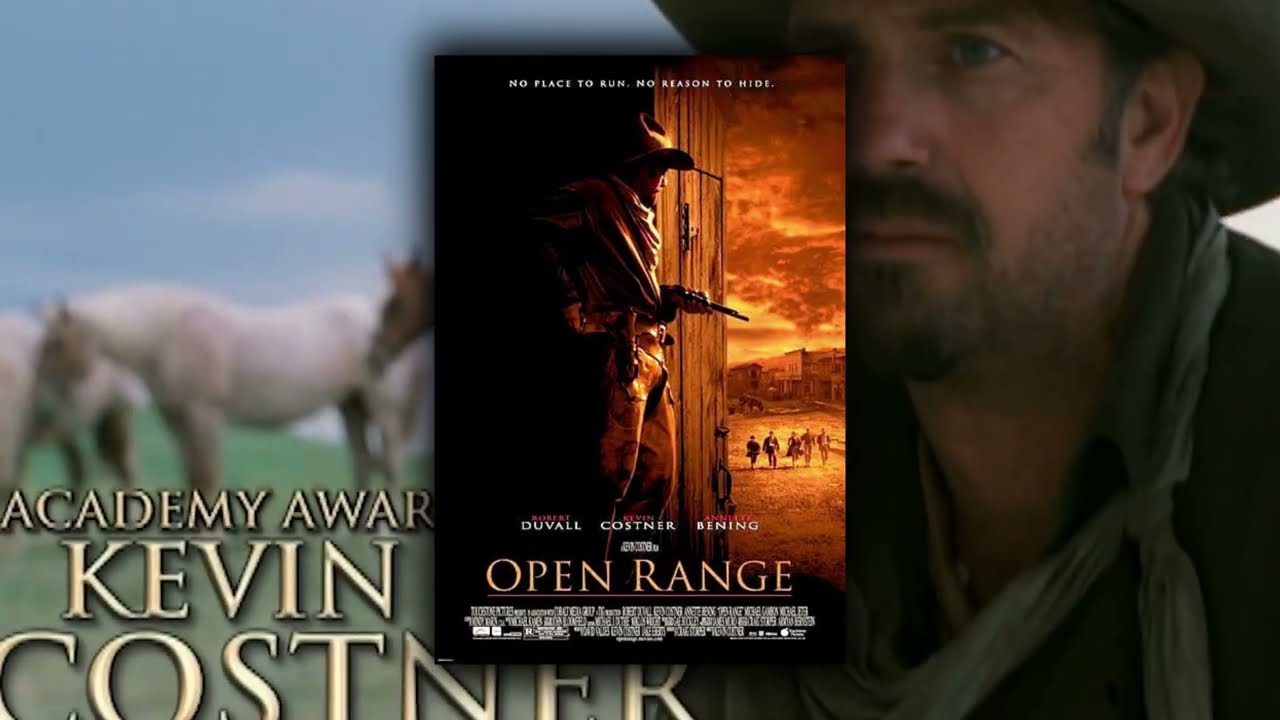
Introduction
Kevin Costner’s Open Range (2003) is not just another Western—it is a meditation on justice, violence, and redemption. As both director and leading man, Costner embraces the traditions of the genre while injecting it with a sincerity that recalls the moral clarity of classic cinema. Alongside Robert Duvall, Annette Bening, and Michael Gambon, he creates a story that resonates far beyond its gunfights and frontier landscapes.

Plot Overview
Set against the sweeping backdrop of the untamed American West, the film follows cattlemen Charley Waite (Kevin Costner) and Boss Spearman (Robert Duvall). Their lives revolve around the simplicity of free-range grazing, an existence rooted in independence and mutual respect. However, their way of life is threatened by the ruthless land baron Denton Baxter (Michael Gambon), whose iron grip over the local town puts both free grazers and townsfolk in peril.

As tensions escalate, Charley and Boss are forced into a confrontation that tests their courage and loyalty. For Charley, this struggle also becomes an inward journey: confronting a violent past while finding the possibility of love with Sue Barlow (Annette Bening), a woman whose quiet strength offers him hope for redemption.

Performances and Direction
- Kevin Costner brings a quiet gravitas to Charley Waite, balancing the character’s haunted past with his search for peace.
- Robert Duvall delivers yet another masterclass in understated authority as Boss Spearman, embodying wisdom and resilience.
- Annette Bening adds warmth and humanity, grounding the film with her tenderness and depth.
- Michael Gambon portrays Baxter with chilling menace, ensuring that the central conflict feels both urgent and inevitable.
Costner’s direction deserves particular praise. He resists the temptation to romanticize violence, instead presenting gunfights as brutal, chaotic, and irreversible. The climactic battle is as much about moral stakes as physical ones, reminding us that violence leaves scars long after the dust settles.
Cinematography and Atmosphere
The landscapes of Open Range are characters in themselves—vast, unyielding, and achingly beautiful. Cinematographer James Muro captures the tension between isolation and community, freedom and lawlessness. Wide shots of the frontier evoke both the promise and peril of life beyond civilization, reinforcing the timeless struggle at the heart of the Western.
Themes and Impact
At its core, Open Range is a story about the price of justice. It asks: What is the cost of standing up to tyranny? What does redemption look like for a man who has lived by violence? And how do friendship and love endure in a world defined by conflict?
The film’s deliberate pacing may test modern audiences, but its patience is purposeful. It allows the characters—and us—to inhabit moments of quiet reflection before plunging into chaos. This rhythm mirrors life itself, where peace is often fragile and fleeting.
Conclusion
Open Range stands as one of the finest modern Westerns, a film that honors its genre’s traditions while offering something profoundly human. It is a story not just of gunfighters and cattlemen, but of men and women seeking dignity in a harsh and unforgiving world. Roger Ebert once described movies as machines for empathy, and this film embodies that truth—it asks us not only to watch but to feel, to reckon, and to remember.